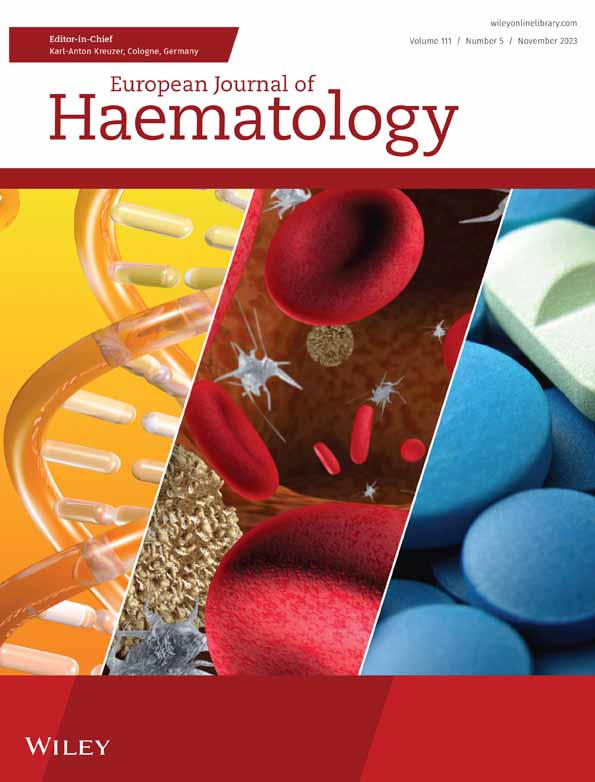An overlooked mimic? Autoimmune myelofibrosis—A scoping review of the literature
Abstract
Background and Objectives
Autoimmune myelofibrosis (AIMF) is a rare cause of bone marrow fibrosis (BMF) occurring in the presence or absence of a defined autoimmune disease (secondary or primary AIMF, sAIMF/pAIMF, respectively). Unlike primary myelofibrosis (PMF), AIMF responds well to immunosuppressive therapy with a benign clinical course. Diagnostic criteria for AIMF in opposition to PMF have been lacking, though recent work has helped better characterise molecular and pathological features of AIMF, improving diagnostic precision.
Methods
Using a modern clinical and pathophysiological understanding of AIMF, we apply scoping review methodology and rigorous case-criteria to retrospectively analyse the case literature. We examine its patient-population, describing patient-associated factors, presentation, bone marrow pathology, genetics, treatment and outcomes.
Results
Fifty-five studies were identified, describing 139 AIMF patients. Patients were mostly young females (~4:1 ratio female:male, median age 40.8 years) and typically presented with cytopenias. Splenomegaly was rare. sAIMF was more common than pAIMF (~3:1 ratio), and most cases responded well to immunosuppressive therapy.
Conclusions
Our results strengthen the emerging picture of AIMF's patient population, natural history and response to treatment. Further work should continue to use reproducible diagnostic criteria, and explore AIMF's pathophysiology, response to different therapies, and sequelae over larger timescales, as well as differences between pAIMF, sAIMF and PMF.
CONFLICT OF INTEREST STATEMENT
Douglas Tremblay receives contracted research funding paid to his institution from CTI Biopharma, Astellas Pharma and Gilead and consulting fees from CTI Biopharma, Novartis, AbbVie, Sierra Oncology, GSK and Cogent Biosciences. The other authors have no conflicts of interest.
Open Research
DATA AVAILABILITY STATEMENT
The data supporting the findings of this study are openly available at the MEDLINE (https://www.nlm.nih.gov/medline/medline_overview.html) and Web of Science (https://clarivate.libguides.com/webofscienceplatform/woscc) databases. Pooled data supporting our findings are available from the corresponding author at request.




